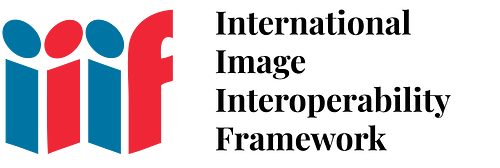About
This is pricing for joining and supporting the consortium, however it is critical to note that implementing IIIF is and will always be free, based on free and open standards!: https://iiif.io/community/consortium/join/

This is pricing for joining and supporting the consortium, however it is critical to note that implementing IIIF is and will always be free, based on free and open standards!: https://iiif.io/community/consortium/join/
We recently announced a community partnership with the Internet Archive, which has formally adopted the IIIF 3.0 specifications for image and object presentation delivery.
There is a great deal of overlap in the work that is done by the IIIF Editors and group co-chairs, and the work done by other standards organizations like the W3C.
IIIF is governed by an Executive Committee and an Operating Committee.
The Image API was proposed in late 2011 as a collaboration between The British Library, Stanford University, the Bodleian Libraries (Oxford University), the Bibliothèque nationale de France, Nasjonalbiblioteket (National Library of Norway), Los Alamos National Laboratory Research Library, and Cornell University. Version 1.0 was published in 2012.
Version 1.0 of the Presentation API was published in 2013 and of the Search API in 2016. (from https://en.wikipedia.org/wiki/International_Image_Interoperability_Framework)
Version 3.0 of the search and presentation APIs were published in 2020.
The IIIF Consortium was founded in 2015 to support the work of the community, and provide governance structures: https://iiif.io/community/consortium/
Started as a Consortium with 11 members, and has grown to 65 as of this year.
As the IIIF Consortium expands its operations and operations, we primarily are exploring funding opportunities around training/translation, and ttravel support for the volunteer specification editors and technical group co-chairs.
We have a robust set of online and in-person training offerings, and we make all the training materials we use available openly so that anyone can make use of them at their own pace. We also offer a relatively low-cost paid online training option that features extensive instructor support, which has proven incredibly popular. However, we're reaching the limit of what our sole instructor can offer in a given year; likewise we're also eager to translate our existing training materials into a wide variety of languages including Spanish, Japanese, Portuguese, and French, among others, so that we can extend the reach of our open access training materials.
We have also done important work toward addressing gender imbalances in structures like the IIIF Editorial Committee and the co-chairs of our Technical Specification Groups. With this, however, we are encountering an increasing need to financially support travel for the newer editors and co-chairs who tend to be less senior and have less financial support from their institutions to travel to Editor and TSG meetings—especially for meetings abroad. Though we have made important strides in making online meetings a primary means of IIIF business, there remains the fact that the writing of open standards and specifications is most efficiently done via focused in-person meetings. In order to foster a more diverse and sustainable Editorial Committee and set of technical group co-chairs, the IIIF Consortium is exploring funding options that would allow us to continue this important work without sacrificing the efficiency of in-person meetings to move the specifications forward.